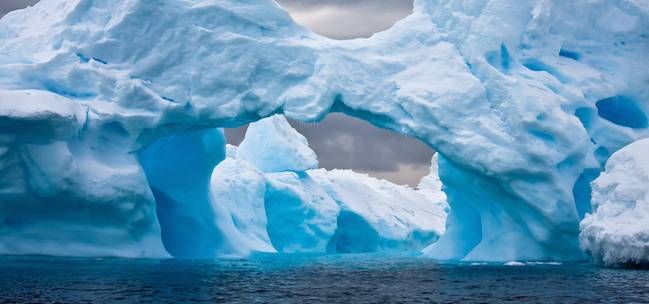
Literary Tourism: Antarctica
So you’ve already shopped the glorious bookstores of Buenos Aires, followed Leopold Bloom’s footsteps through Dublin, relaxed in Jane Austen’s favorite spas in Bath, and thumbed your way across the continent on the trail of Kerouac and Cassady. Is there nowhere left for the book lover to explore? Fret not: Antarctica awaits. It may be Earth’s least-trodden landscape, but it’s provided a subject for authors from John Calvin Batchelor (The Birth of the People’s Republic of Antarctica) to Maria Semple (Where’d You Go, Bernadette), and it has plenty to offer the dedicated literary tourist. Unfortunately, we have space here to recommend just a couple of itineraries.
Various Landmarks of the Doomed Scott Expedition
In 1910, Sir Robert Scott embarked on a mission to Antarctica, hoping to become the first person to reach the South Pole and there plant a flag for England. The advance party of this extremely well-planned (ponies instead of sled dogs–what could go wrong?) expedition finally reached its goal on 17 January 1912, only to find a Norwegian banner and a polite letter of greeting from Roald Amundsen, who had arrived at the pole a month earlier. “Great God! This is an awful place and terrible enough for us to have laboured to it without the reward of priority,” lamented Scott in his diary, before turning back. He and his team were stymied by atrocious weather and lack of food, and despite the self-sacrifice of one of the men, who exited his tent voluntarily and disappeared into the frigid wastes, saying, “I am just going outside and may be some time,” the entire group perished just eleven miles short of a supply depot.
Surviving expedition member Apsley Cherry-Garrard chronicled the doomed mission in a classic piece of writing that’s a must-read for any armchair traveler. He cuts right to the chase in his introduction to The Worst Journey in the World: “Polar exploration is at once the cleanest and most isolated way of having a bad time which has been devised.” Visit the frozen ruins of the party’s primitive huts and take a selfie next to their slack, worn, second-place flag to see if you agree.
Pym’s Cataract
No trip to Antarctica is complete until you catch sight of its most spectacular (super)natural feature, made famous by the hallucinatory genius Edgar Allan Poe. In his 1838 novel The Narrative of Arthur Gordon Pym, he presciently predicted many of the difficulties later explorers would experience in real life, and then some. Pym and his companions survive shipwreck, mutiny, and cannibalism, and that’s just for openers. As they sail closer to the legendary polar regions, the weather and the environment change mysteriously. The water turns boiling hot and an ashy substance falls on them through the endless, wintry darkness.
And then things get really weird: “The range of vapor to the southward had arisen prodigiously in the horizon, and began to assume more distinctness of form. I can liken it to nothing but a limitless cataract, rolling silently into the sea from some immense and far-distant rampart in the heaven … from out the milky depths of the ocean a luminous glare arose, and stole up along the bulwarks of the boat. We were nearly overwhelmed by the white ashy shower which settled upon us and upon the canoe, but melted into the water as it fell. The summit of the cataract was utterly lost in the dimness and the distance. Yet we were evidently approaching it with a hideous velocity.”
At last the terrible truth is revealed: “The darkness had materially increased, relieved only by the glare of the water thrown back from the white curtain before us. Many gigantic and pallidly white birds flew continuously now from beyond the veil, and their scream was the eternal Tekeli-li! as they retreated from our vision … And now we rushed into the embraces of the cataract, where a chasm threw itself open to receive us. But there arose in our pathway a shrouded human figure, very far larger in its proportions than any dweller among men. And the hue of the skin of the figure was of the perfect whiteness of the snow.”
Be aware that, given the nearly unrelieved whiteness at the end of the world, flash photography will prove ineffective when taking pictures of the hooded guardian. And please, do not feed the giant pallid birds. Tekeli-li, everybody, and enjoy your plunge over the chasm!
Antarctica is beautiful and fascinating, but it’s also threatened by tourism. Read about it to your heart’s content, but unless you’re an accredited researcher, as John Oliver suggests, don’t go.














